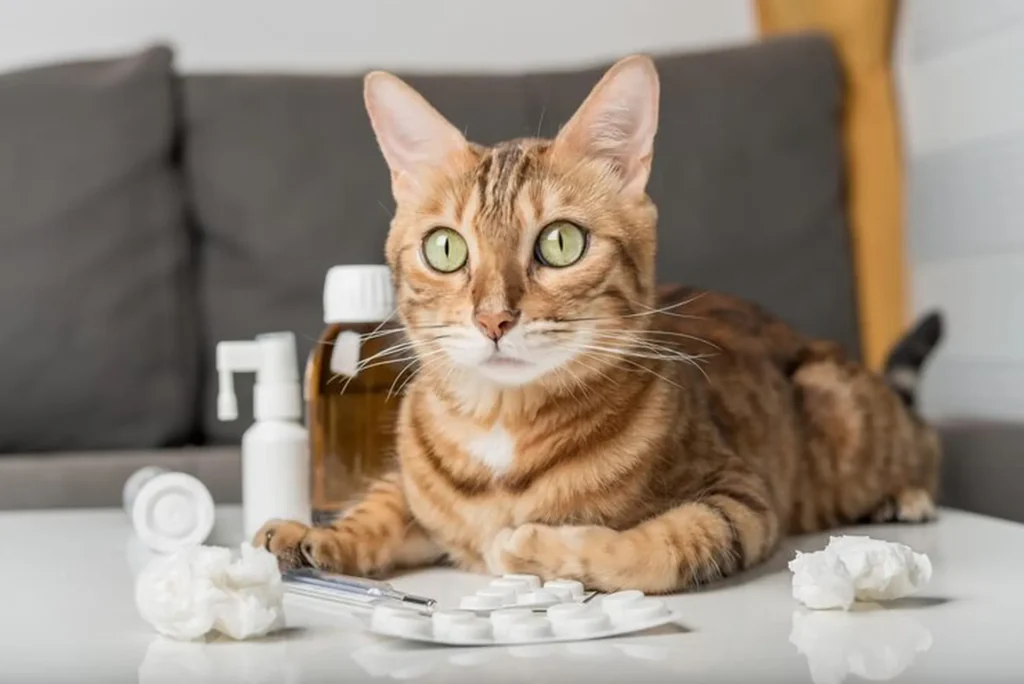By Crescenta Cañada Cat Clinic, La Crescenta, CA
Did you know that 50–80% of cats over the age of four suffer from some form of periodontal disease? Just like in people, dental disease in cats begins with plaque buildup on the teeth, which leads to tartar, gingivitis, and—if left untreated—painful infections and tooth loss
Brushing Your Cat’s Teeth
The good news? Regular brushing at home is one of the most effective ways to protect your cat’s teeth and gums.
Why Brush Your Cat’s Teeth?
Plaque begins forming within hours after eating, and without daily cleaning, it hardens into tartar that irritates the gums and allows bacteria to flourish. Over time, this can lead to periodontal disease, a condition that doesn’t just affect your cat’s mouth—it can also impact their overall health, including the heart, liver, and kidneys.
Routine brushing keeps plaque under control and prevents painful dental disease, saving your cat from discomfort and you from costly dental procedures.
When to Start
The earlier, the better!
It’s easiest to teach your cat to accept tooth brushing while they’re still a kitten, but older cats can learn too—it just takes a little more patience and consistency.
Aim for daily brushing to keep plaque at bay, but brushing at least three times a week can still make a big difference
Brushing Your Cat’s Teeth
How to Teach Your Cat to Accept Tooth Brushing
Patience and positive reinforcement are key. Follow these steps to help your cat get used to the process:
- Create a calm environment. Choose a quiet room where your cat feels safe. Sit with them in your lap or on a comfortable surface.
- Use tuna water for training. Dip a cotton swab in tuna water and gently rub along your cat’s teeth and gums to create a positive association.
- Start slow. Focus on just a few teeth at a time during the first sessions.
- Gradually add the toothbrush. Once your cat tolerates the cotton swab, introduce a soft cat toothbrush or finger brush.
Over time, your cat will associate brushing with a pleasant and stress-free experience
Brushing Your Cat’s Teeth
Choosing the Right Toothbrush and Toothpaste
Toothbrush:
Use a small, soft-bristled brush designed for cats, a finger brush, or even a soft baby toothbrush. Avoid pressing too hard to prevent gum irritation.
Toothpaste:
Never use human toothpaste—it can cause stomach upset or even toxicity. Instead, choose cat-specific toothpaste available in cat-friendly flavors like poultry or fish. These products are safe to swallow and help make brushing enjoyable for your pet.
Look for products approved by the Veterinary Oral Health Council (VOHC) at vohc.org.
Avoid baking soda—it’s not safe for cats and tastes unpleasant
Brushing Your Cat’s Teeth
How to Brush Your Cat’s Teeth
Once your cat is comfortable with the process, you can begin brushing:
- Apply a small amount of cat toothpaste to the brush.
- Hold your cat’s head gently at a 45° angle and lift the lips.
- Focus on the outer surfaces of the large back teeth and canine teeth, where plaque builds up most.
- Brush in small circular motions for about 30 seconds per side.
- Gradually increase the number of teeth you brush each session until you can clean the entire mouth
Brushing Your Cat’s Teeth
Remember—don’t worry about brushing the inner surfaces. Your cat’s tongue naturally helps keep those clean.
Additional Tips
- Wash your hands thoroughly after brushing—your cat’s mouth contains bacteria.
- Rinse the toothbrush after every use and replace it every three months.
- If you have multiple cats, use a separate toothbrush for each one to prevent spreading bacteria
Brushing Your Cat’s Teeth
Healthy Teeth, Happy Cat
Establishing a dental care routine at home is one of the best ways to keep your cat healthy, comfortable, and smiling. Combined with regular veterinary dental checkups, brushing helps prevent painful dental disease and supports your cat’s long-term well-being.
If you need help getting started or would like personalized advice, contact our team—we’re happy to guide you every step of the way!



